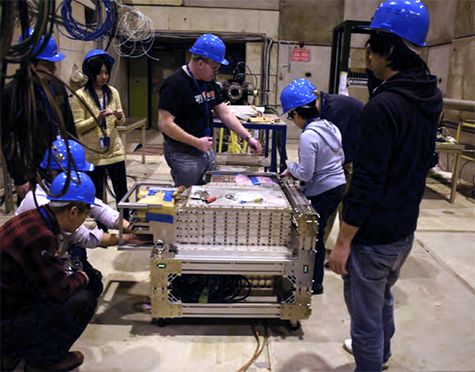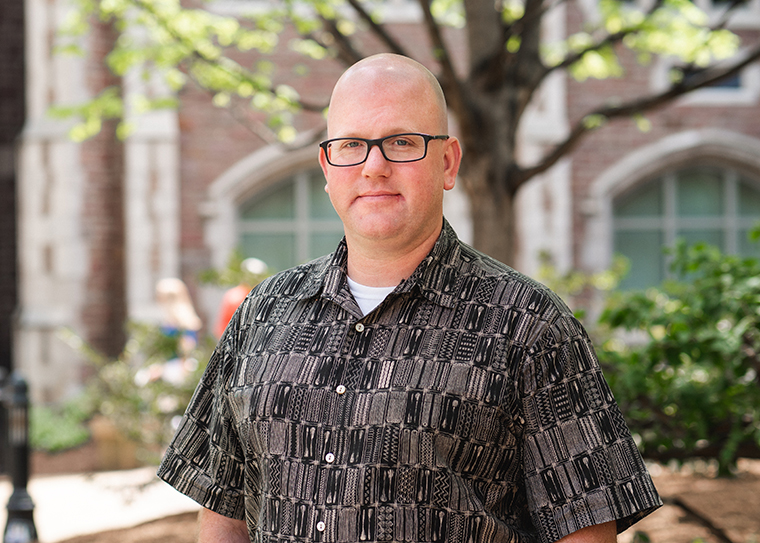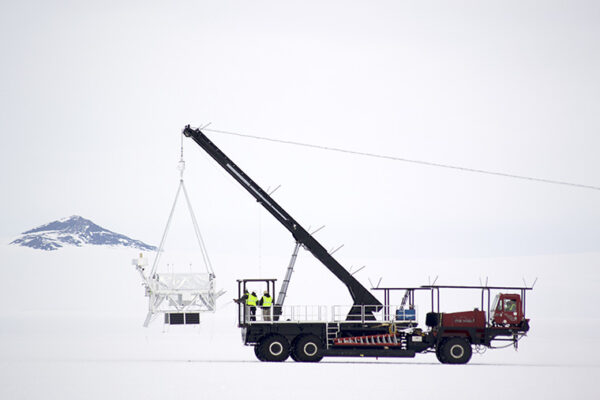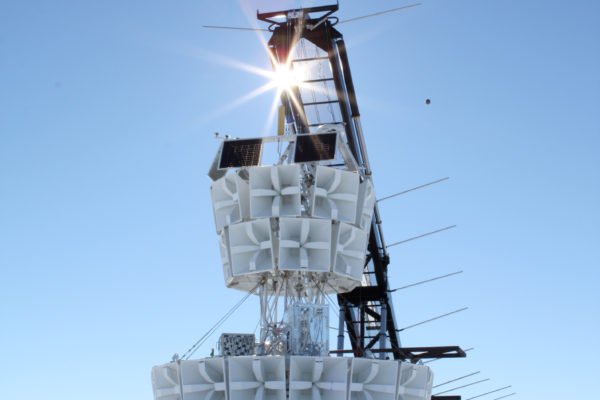Brian Rauch, research assistant professor of physics in Arts & Sciences at Washington University in St. Louis, co-authored a recent study in Physical Review Letters (PRL) suggesting that carbon, oxygen and hydrogen cosmic rays travel through the galaxy toward Earth in a similar way, but, surprisingly, that iron arrives at Earth differently.
Learning more about how cosmic rays move through the galaxy helps to address a fundamental, lingering question in astrophysics: How is matter generated and distributed across the universe?

Cosmic rays are atomic nuclei — atoms stripped of their electrons — that are constantly whizzing through space at nearly the speed of light. They enter Earth’s atmosphere at extremely high energies. Information about these cosmic rays can give scientists clues about where they came from in the galaxy and what kind of event generated them.
Rauch is the institutional principal investigator leading Washington University’s participation in the Calorimetric Electron Telescope (CALET) collaboration.
Rauch participated in four CALET instrument beam tests at CERN, totaling three months: for beams of electrons, protons and primary ions and fragment beams (18Ar and 82Pb).
“This testing was critical to calibrate the instrument and simulation models used in the flight analysis,” Rauch said. “I also participated in modeling and simulation efforts for over five years. To achieve the primary science goal of measuring the highest energy electrons, CALET must reject the much more abundant lower energy protons. The methods used for this rely on the simulations and models validated with accelerator tests using electron and proton beams with a range of energies.”
That range is important because cosmic rays arrive at Earth from elsewhere in the galaxy at a huge range of energies — anywhere from 1 billion electron volts (eV) to 100 billion billion eV. The CALET instrument is one of extremely few in space that is able to deliver fine detail about the cosmic rays it detects. A graph called a cosmic ray spectrum shows how many cosmic rays are arriving at the detector at each energy level.
The spectra for carbon, oxygen and hydrogen cosmic rays are very similar, but the key finding from the new paper is that the spectrum for iron is significantly different.
Rauch continues to work with graduate student Wolfgang Zober to analyze data related to very rare, ultra-heavy cosmic rays (heavier than 28Ni) for a forthcoming publication. Separately, Rauch also serves as principal investigator for Washington University’s SuperTIGER effort, a cosmic ray balloon experiment.
The Japanese space agency launched CALET and today leads the mission in collaboration with the U.S. and Italian teams. In the U.S., the CALET team includes researchers from Louisiana State University; NASA Goddard Space Flight Center; University of Maryland, Baltimore County; University of Maryland, College Park; University of Denver; and Washington University.
Read more about the new publication in PRL.



